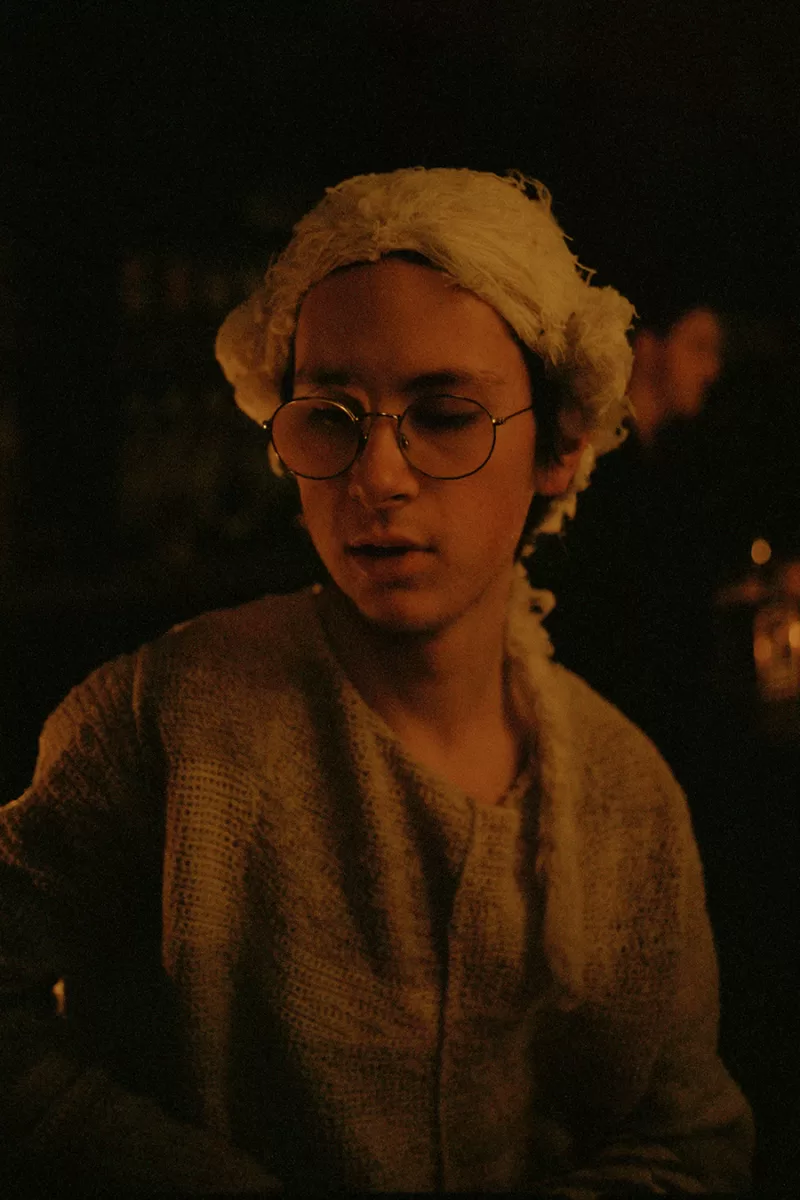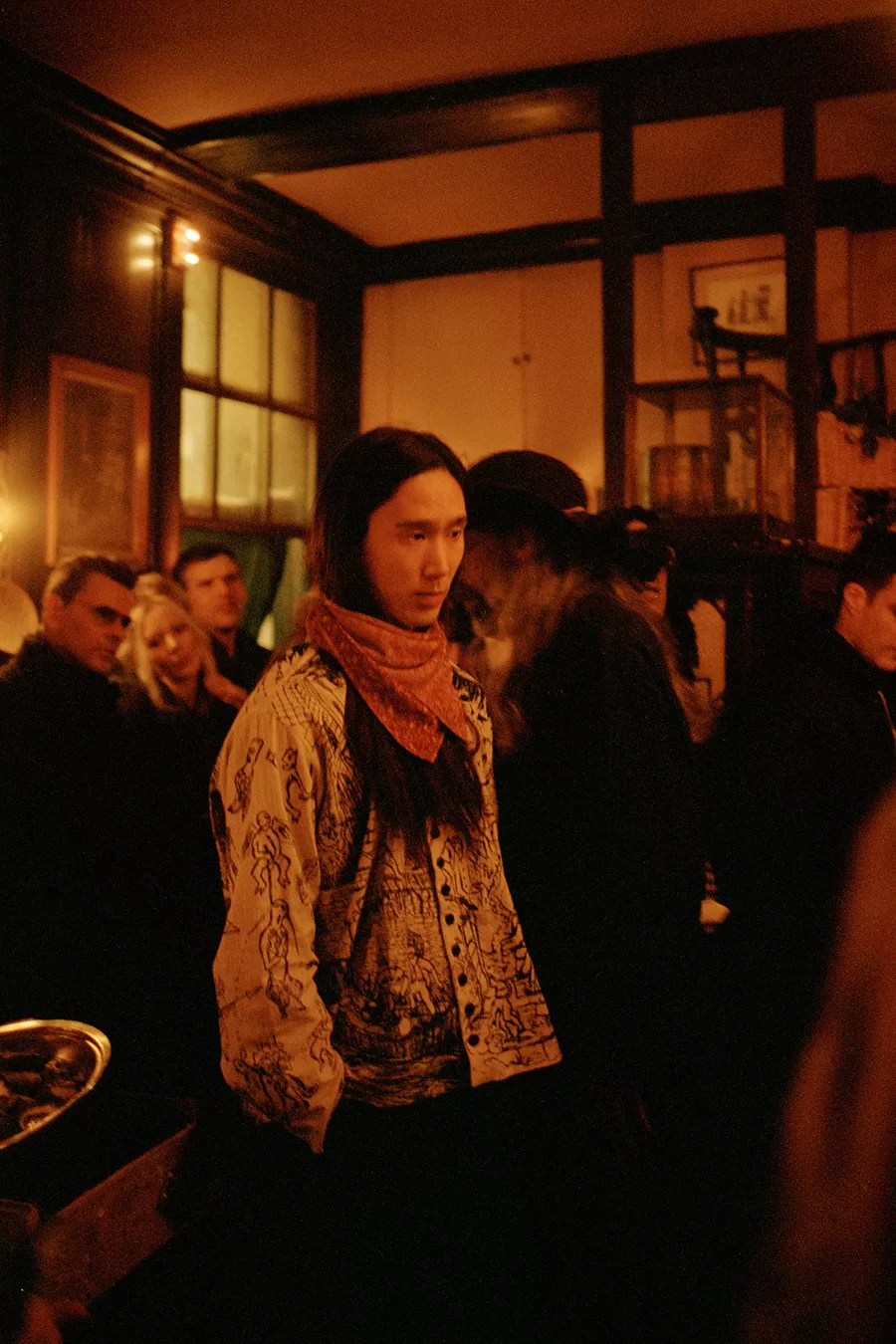London Collections Men AW19 – an interview with John Alexander Skelton

As John Alexander Skelton presents his AW19 collection, the emphasis continues to be on an alternative aesthetic. The London-based designer is known for his exploration of the English heritage, his love of sustainability, emphasis on craftsmanship and, most importantly, his disparate presentations. Far off the catwalk tumults and champagne-sipping crowds (the German Warsteiner beer was the drink of the season for a change) at London Fashion Week, the Central Saint Martins graduate proves himself season after season to be one of the most original and unique designers on London’s current fashion horizon.
With this season’s “choral music (a performance which was) inspired by the seminal Dolmen Music by Meredith Monk”, Collection VI was a successful continuation of the designer’s off-schedule presentations. Skelton focused on a mostly muted colour palette which he interjected with fire red tweed coats, tailored pants and checked suits. The unconventional cast of models, diverse in ethnicity, age and size, brought the North London area, known in past times as Alsatia, the sanctuary of criminals and unconformists, back to life with a haunting performance. The mix of finely crafted coats mixed with less refined cotton two-pieces, hinted at laws from the 15th to 17th century, when members of lower social classes weren’t allowed to wear refined clothes but bypassed those laws by wearing “the hand-me-downs of their masters”. When asked about his approach to clothes, the designer explained: “I like to see something that has a visible history, that a person has occupied. I think that kind of journey is the beautiful part (of designing)”.

In your last interview with Paper Journal, you mentioned that many consumers and designers are still ignorant towards the theme of sustainability. Do you feel that ideas surrounding sustainability have changed in subsequent years?
I think that now, sustainability has become more of a trend, which it should’ve never been but it was inevitable. For the most part, consumers are still incredibly ignorant but they also are very misguided and not well enough informed. The amount of microfibre plastics used in the fashion industry, for example in the faux fur production, is unbelievable and continually pollutes us and the atmosphere. Faux fur is helping to prevent cruelty in the animal world but on the other hand, it leads to extensive harm in our natural world, which most consumers are not even aware of.
You’ve previously talked about your fascination with different materials and how crucial each fabric is for the overall message of your designs. What do you look for when choosing the fabrics for your collections?
Yes, it all starts with the materials – they inform what the collection will look like in the end. I spend much longer than most designers with the development, as I start up to 7 or 8 months in advance in some cases. Almost every fabric that I use in my collections is either designed by myself or has undergone a process in order to make the fabric my own. In terms of what I look for, it entirely depends on the collection and the message I’m looking to convey. It all has to be natural, produced in the UK or handmade in India, so my choices are often quite limited which is another reason why I have to develop so much of my own fabric. On the other hand, it becomes a much more rewarding and interesting process this way.
From Ghandi to British folk: your collections are based on different episodes around the world. What was the inspiration for your AW19 collection?
The main inspiration behind my latest collection is an area of London, once known as Alsatia. It was lawless and quite a debaucherous place and while it was renowned as a debtor’s sanctuary, it was also very industrial with weavers, printers, tailors and embroiderers inhabiting its quarters.
You’ve collaborated with legendary hat designer Stephen Jones in previous seasons. What is it about his work that is so compelling?
Stephen always understands the message I’m trying to convey on an intellectual level which allows for a deeper conversation. It’s not his work but more the way he works and can bring an interesting perspective to the subject that matters to me.
Your Instagram is an interesting mix of inspiring snapshots and your own designs. As a designer whose work is based on craft and tradition, what is your relationship with social media in general?
While I do think that there’s a side of social media that’s informative and educational, its grasp on many people’s lives has become ridiculous, overbearing and frankly, quite dull. Personalities are lost in real life and good conversation halted.
With the Brexit discussions being currently omnipresent, we’re living, without a doubt, in a climate of political and social change. What would you consider to be your biggest challenge as a designer in these times of socio-political uncertainty?
As we have no real bearing on what is going to happen to the UK, it’s very hard to speculate. I will continue to work as I do right now, regardless of the changes. Naturally, some things will become more difficult, but it’s important that we don’t let them hinder our work and creativity.



